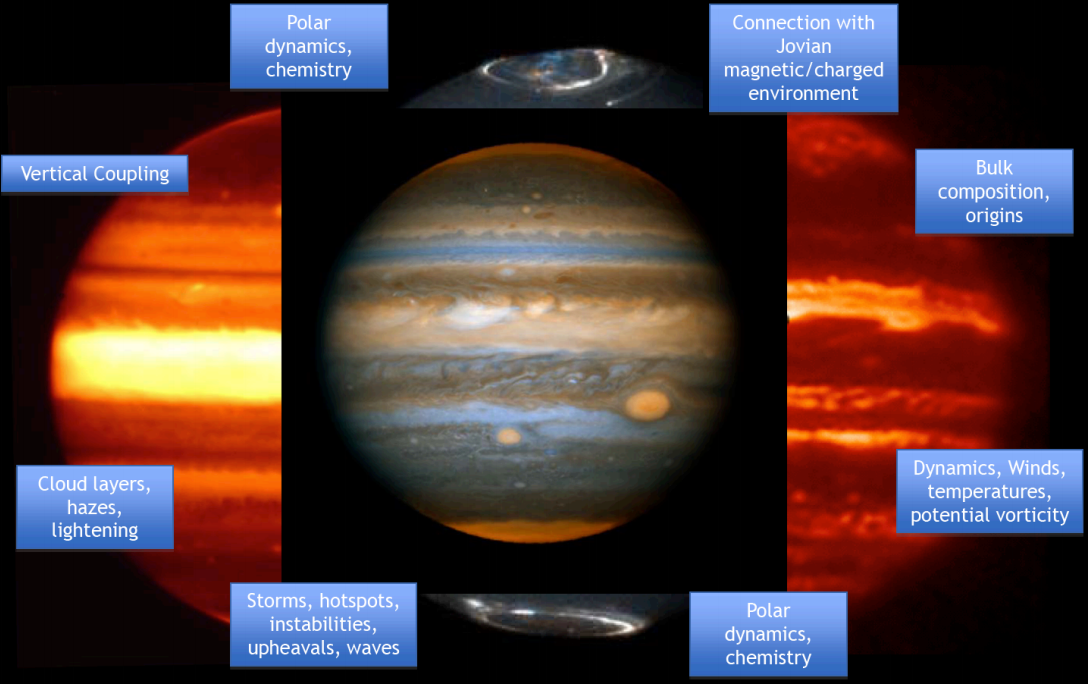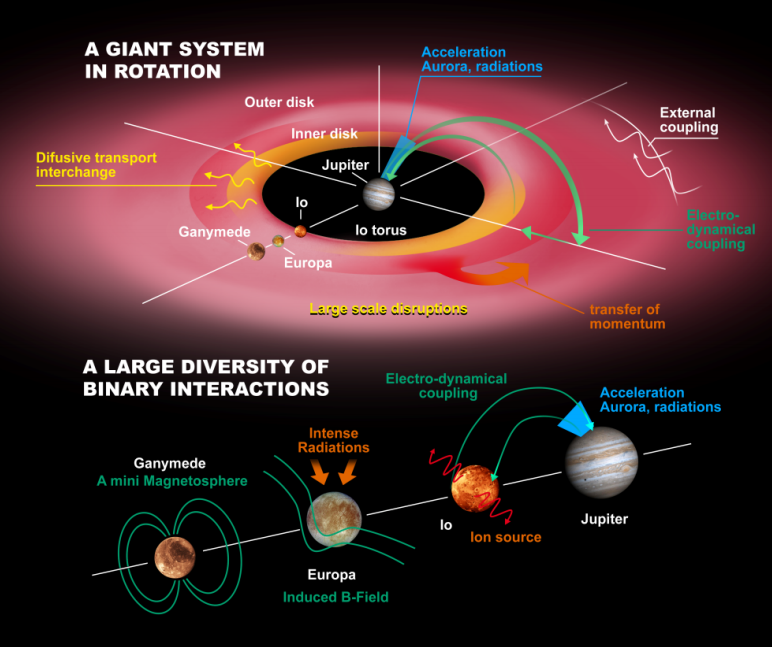The European Space Agency (ESA) is sending JUICE to Jupiter in 2022. Rather than some kind of interplanetary beverage delivery, JUICE stands for JUpiter ICy moons Explorer (JUICE) and is the first Large-class mission in ESA's Cosmic Vision 2015-2025 program. The spacecraft will carry out the most thorough exploration of Jupiter and its moons since NASA's Galileo mission that ran from 1989 to 2003. The ESA has now announced the eleven scientific instruments selected to for the unmanned probe to carry to the gas giant.
The basic design of JUICE is very similar to other large space probes, such as NASA’s Cassini and the Mars Reconnaissance Orbiter. It’s most significant feature is its power source. Whereas most probes sent to the outer Solar System are nuclear powered, JUICE is solar powered. Jupiter is at the limit of how far a solar powered craft can be sent and hope to work reliably, so JUICE will carry an array of panels of about 60 - 75 m2 (646 - 807 sq-ft), which is unusually large for a craft of its size.

JUICE’s purpose is to study Jupiter’s moons with an emphasis on their habitability, as well as Jupiter itself. Its planned launch date is scheduled for June 2022, when it will lift off from ESA’s South American spaceport atop an Ariane 5 rocket. It will then spend over seven years traveling to Jupiter using slingshot maneuvers by flying past Earth, then Venus, then Earth, then Earth again, until it achieves sufficient speed to reach its destination.
In January 2030, the spacecraft will go into orbit around Jupiter, where it will steer clear of the electronics-frying inner radiation belts and carry out a three-year tour of Jupiter’s largest moons – Callisto, Europa and Ganymede. These are three of the four Galilean moons, named after Galileo, who discovered them in 1610. ESA chose these for study because these moons have oceans beneath their icy crusts that may support life. This is also the reason why the fourth Galilean moon, Io, is left out. It has highly active volcanoes instead of oceans, so it’s sort of the odd moon out.
JUICE will carry out repeated flybys of Callisto, Europa and Ganymede using gravity assist maneuvers similar to the ones it used to reach Jupiter, because the energy needed to move around the Jovian moons is almost as great as for moving around the Solar System. It will make a dozen flybys of Callisto, the most heavily cratered object in the Solar System, and two of Europa to measure the ice crust over its buried ocean. Meanwhile it will constantly monitor Jupiter’s magnetosphere and atmosphere.

After completing its tour, JUICE will then go into orbit around Ganymede in 2033 – making it the first spacecraft to orbit a planetary moon besides the Earth’s. Over a period of months, it will execute a series of orbits ending in a low-altitude orbit 200 kilometers (125 mi) above the surface. This extended stay is of particular interest to scientists because Ganymede is the only moon in the Solar System with its own magnetic field. It’s hoped that JUICE will shed light on the interaction between Jupiter’s massive magnetosphere and Ganymede's magnetic field, which scientists believe is partly self-generated and partly induced by interaction with Jupiter – much as a needle will magnetize when left next to a magnet – so it is a natural laboratory of magnetic phenomena.
In addition, JUICE will carry out detailed studies of Ganymede’s ocean before ending its mission in June 2033 with a controlled impact of JUICE on the moon’s surface.
"Jupiter and its icy moons constitute a kind of mini-Solar System in their own right, offering European scientists and our international partners the chance to learn more about the formation of potentially habitable worlds around other stars," said Dmitrij Titov, ESA's JUICE Study Scientist.

The eleven instruments chosen for JUICE by ESA's Science Programme Committee are currently under development by 15 European countries, the U.S. and Japan. Since the instruments are still works in progress, present details are sketchy or based on older JUICE mission assessments. They will consist of cameras and spectrometers, a laser altimeter, an ice-penetrating radar, a magnetometer, plasma and particle monitors, and radio science hardware.
NASA said that its contribution would include an ultraviolet spectrometer to acquire images and explore the surfaces and sparse atmospheres of the moons as well as that of Jupiter and how the moons interact with the planet. A second instrument is the Radar for Icy Moon Exploration intended to penetrate the ice crusts of the Jovian moons to a depth of 5 miles (9 km). The third and final NASA instrument is the Particle Environment Package to measure the neutral material and plasma that are accelerated and heated to extreme levels in Jupiter's magnetic environment.

The complete list of instruments released by ESA is:
- Jovis, Amorum ac Natorum Undique Scrutator, camera system (JANUS)





















